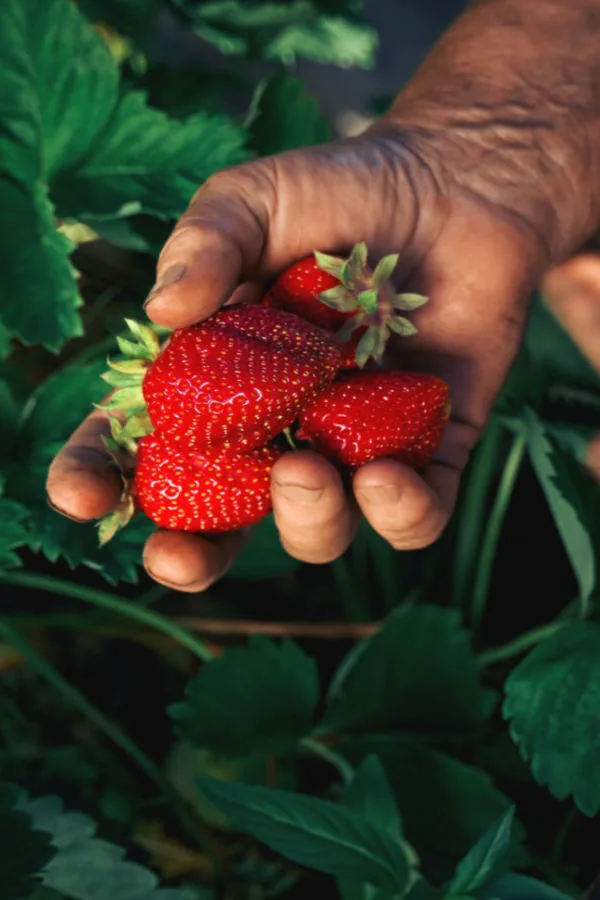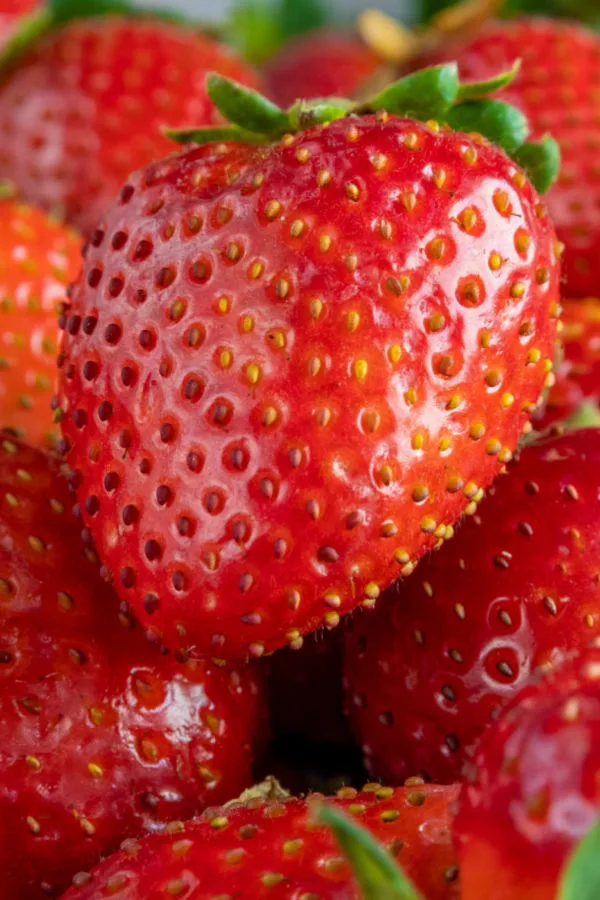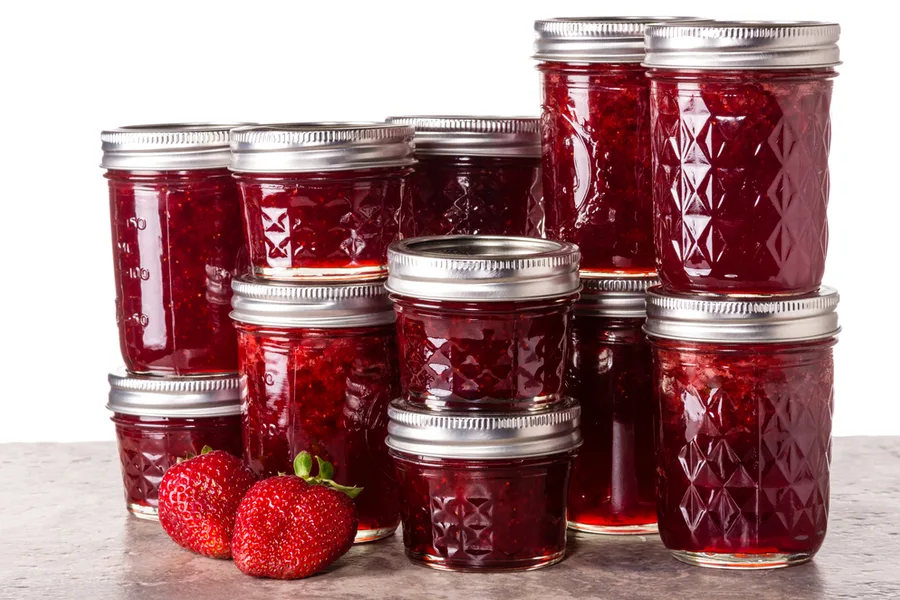When it comes to planting strawberries in your garden, raised beds, or a little patch in your backyard – a few simple planting tips can go a long way in helping you grow a sizable harvest for years to come!
There is nothing quite like the taste of home-grown strawberries. In fact, the flavor and freshness simply can’t be beat. Once you grow your own and experience the flavor of a just-picked berry, you might find it hard to ever buy them at the grocery again.
Strawberries are a wonderful crop to plant for those looking for a reliable perennial source of fruit. Not only are they fairly easy to plant and maintain, they don’t require a tremendous amount of space to grow a significant crop. Or at least one big enough for fresh eating and making a few pies and jars of jelly!

With that in mind, here is a look at how to plant and grow your own strawberry plants from start to finish, including a look at how to maintain your crop from year to year to keep it producing strong. We have also included a few excellent varieties at the end of the article to help those looking for great types to grow.
The Secrets To Planting Strawberries
More than anything else, growing for success means selecting the type of strawberry that is right for you. Strawberries are divided into two categories, June bearing (often called spring bearing), and Everbearing. Both produce good crops, but in different ways.
It really comes down to personal preference when selecting which type (or both) you want to grow. June bearing is our personal favorite (although everbearing are a close second), simply because the berries tend to be larger and juicier than everbearing varieties. They are perfect for fresh eating, making pies, preserves, and of course – strawberry honey jam!
June bearing strawberries have one major harvest season in late spring to early summer. The berries all ripen over a 3 to 4 week period. After that, the plants are done. They are good for preserving simply because the all-at-once harvest makes it easy to have the quantities of berries needed.
Everbearing strawberries, on the other hand produce fruit all season long. The berries of everbearing tend to be smaller in size (although many are still quite large), with the total yield spread out over the entire year.

Everbearing plants tend to be more compact plants. It certainly makes them a great choice for patios and planters. They are a great selection for people wanting a smaller supply of fresh strawberries – but all throughout the growing year.
Both June bearing and everbearing can be planted in traditional gardens, raised beds, or in a dedicated patch of soil anywhere in the landscape for that matter. Whichever type you choose, it’s important to note, they both plant with the same technique and care.
When To Plant Your Strawberry Patch – The Secrets To Planting Strawberries
For areas with cold winters, planting is best done early in the spring. If you live in a warmer climate with warmer winters, it is best to plant in late fall. This helps the plants to adjust during cooler weather and establish more easily. It also allows for a first crop the following early spring.
For us here in Ohio, late April is the best time to get transplants in the ground. You will usually get a small harvest from first year plants depending on how big your transplants are. It will be during the second season that harvests will begin to reach their full potential.
Listen Below To Our Podcast On How To Plant & Grow Strawberries
Raising Your Strawberry Bed Space – The Secrets To Planting Strawberries
Strawberries do best when planted on raised ground within the rows. If planting in a raised bed, be sure the plants sit slightly above the surrounding soil. The key is to not have water pool up at the base of the plants, which can easily rot them out.
For traditional soil planting, it is best to plant your strawberry plants in raised rows. Mound soil in your rows to a few inches in height. Make your rows eight to ten inches wide, being careful to taper the mounds down gently on each side to help shed off excess rain or water.
Preventing Weeds With A Barrier – The Secrets To Planting Strawberries
When planting a strawberry patch, weeds are the mortal enemy of a good harvest. When present, they steal nutrients from the soil needed by the strawberry plants. And strawberry plants with their runners can be hard to weed!
One of the best ways to prevent weeds around plants is to cover the planting rows with landscape fabric. We are not big fans of fabric with traditional vegetables, but with strawberries, they are a must!
Putting down fabric is easiest to do before planting. Create your planting rows and then roll out the fabric over them. Cut holes out for plants by making a few slits or small circles with a knife to allow for planting and watering. Product link : Landscape Fabric 3 x 150′
Preparing The Soil & Planting – The Secrets To Planting Strawberries
All strawberries grow best in fertile, well draining soil. Because they are a perennial crop and will be growing in the same soil for many years to come, it’s important to take the time before planting to build soil strength and structure.
The most efficient way to do this is with compost. Work in generous amounts of compost to your planting holes when planting. A good rule of thumb is to work in a few cups of compost into each and every hole. If your soil is hard or on the clayish side, you can also add in a cup of sand to each hole to help.
Plant young transplants 10 inches apart in the rows. Allow approximately 18 to 24 inches between rows to make maintaining and harvesting your plants easier.
When planting, plant so that the upper portion of the crown is just slightly above the level of the ground. The crown is the portion that is directly above the root area and below the first set of leaves. As you plant, press in the soil gently around the roots to prevent the crowns from heaving out.
Finish by watering the plants in and then applying a few inches of mulch. Mulch will help keep weeds out and regulate the soil temperature and moisture levels. Most importantly, it will also help protect berries from touching soil, especially if you choose not to use a weed barrier.
A Few Strawberry Varieties To Try…
- Honeoye Strawberry – Honeoye is a June bearing strawberry plant that produces a big crop of large berries. Affiliate Product Link: Honeoye Strawberry Plants
- Albion – Albion is a large fruit producing everbearing variety that will produce one to three pints of strawberries per plant Affiliate Link: Albion Strawberry Plants
- Ozark Beauty – If you are looking for an everbearing variety that is good in both cold and warmer climates, this is it! Excellent for patio planters or in a small patch as well. Affiliate Link: Ozark Beauty Plants
Long Term Care – The Secrets To Planting Strawberries
Once established, June bearing strawberries benefit greatly from being cut back after they finish producing. This helps to grow a stronger root system. It also encourages new growth and blooms for the following year. Plants can be mowed off or cut back to the ground in the first few weeks of July.
Mowing off in early summer allows the plants plenty of time to grow back before winter. This is important to both protect plants, and grow out their buds to become next years strawberries.
Whatever you do, don’t mow plants off in the fall or you risk losing your crop. If they are still growing, simply leave them be until next summer. Mowing too late in the season puts them at high risk of freezing out over winter.
After mowing, apply an inch or two of compost on top of the plants. As the compost breaks down, it will add nutrients back in the soil, feeding plants for next year’s crop. You can also apply a light dose of fertilizer (10-10-10) at this point as well. Both the compost and fertilizer help plants build up strength for the following season.
Everbearing strawberries, because they continually produce, do not need to be cut back in season. They can be trimmed back in the fall to a few inches to help them prepare to store energy for the following season.
Mulching Your Strawberry Patch For Winter
As late fall approaches, mulch your plants with 4 to 6 inches of straw, shredded leaves, or pine needles. This will helps them through the frigid winter months and protect them from freezing out in extremely cold winters.
Because strawberries prefer the soil to be more on the acidic side – this is one time where green pine needles make an excellent mulch. Green needles are better than dried needles as they contain and can give back acid as they break down.
Although a perennial, as strawberry plants age in years, they will begin to decline in production. After 4 or 5 years, it is best to start replacing the original plants with new growth offshoots. These are known as runners.
Runners are new plants that have established from the main plant. This can be done when plants finish production. Simply remove the old portion of the plant and replant the newer offshoots. They will settle in by the end of the growing season to become next years “new” plants.
Here is to planting your own strawberry patch – and to years and years of delicious strawberries! For more information on end of season care for your strawberry plants, see What To Do With Strawberry Plants In The Summer – After Your Harvest Ends! and How To Keep Strawberry Plants Safe Over Winter – Fall Strawberry Plant Care Secrets! Happy Gardening – Jim and Mary
Jim and Mary Competti have been writing gardening, DIY and recipe articles and books for over 15 years from their 46 acre Ohio farm. The two are frequent speakers on all things gardening and love to travel in their spare time.
As always, feel free to email us at thefarm@owgarden.com with comments, questions, or to simply say hello! You can sign up for our free email list in the subscribe now box in the middle of this article. Follow us on Facebook here : OWG Facebook. This article may contain affiliate links.



